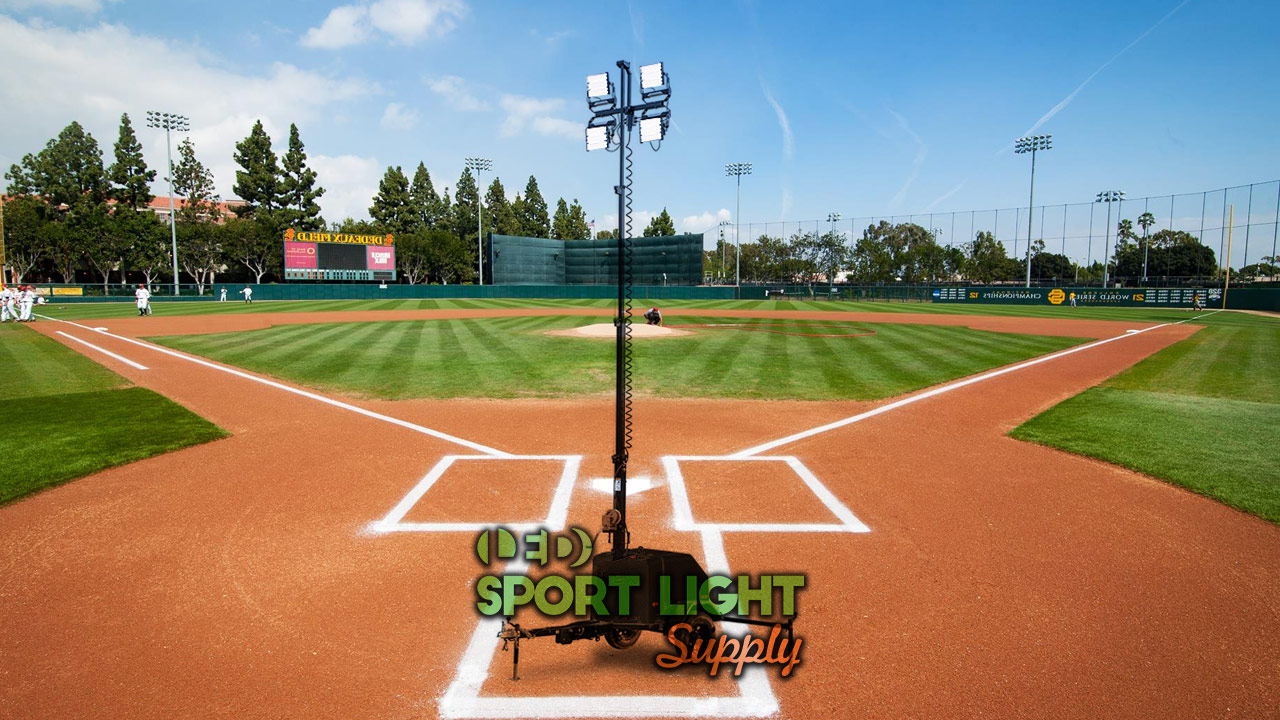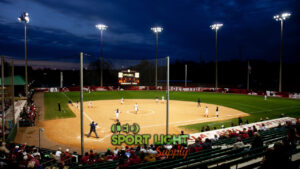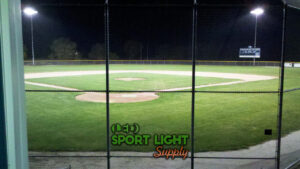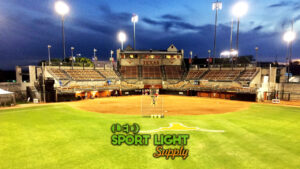There are times when a need to light a sports field occurs, and no fixed lighting exists. Games are only played once in a while, or existing lighting may not be working. In circumstances like this, portable sports field lighting can be ideal.
Renting a portable sports field lighting unit may be the perfect solution. Fortunately, today cost-effective portable units are available when required.
What are Portable Baseball Field Lights?
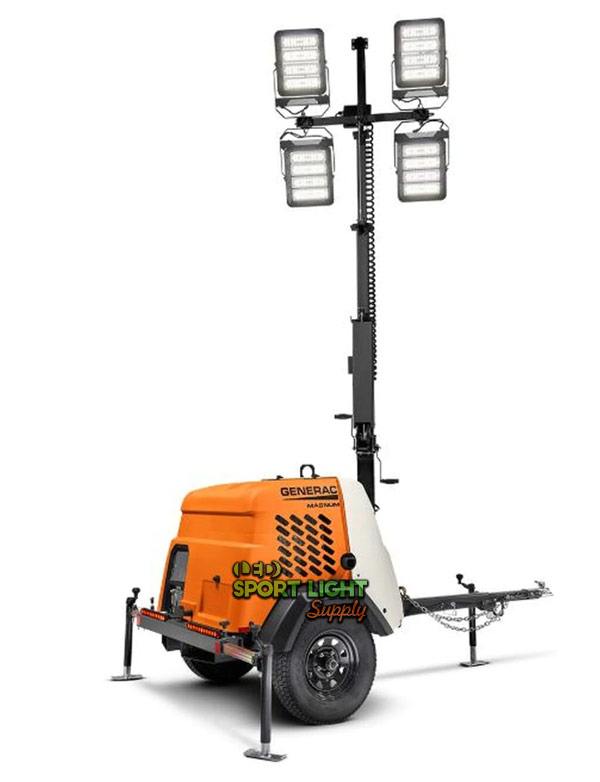 Portable baseball field lights are temporary lights that can run from existing power. They may also operate from small generators. Some models come with built-in generators. Units with wheels that roll into position are common. Some models will have a generator on the trolley and are ready to raise and switch on, within minutes.
Portable baseball field lights are temporary lights that can run from existing power. They may also operate from small generators. Some models come with built-in generators. Units with wheels that roll into position are common. Some models will have a generator on the trolley and are ready to raise and switch on, within minutes.
Portable lights will have a mast that rises, carrying the lights to heights of between 6 and 20 meters in some models. The user will raise the mast with a hand-turned winch. Not all models come with a built-in generator as in some cases mains power may be available.
Suppliers design units to cope with winds, and they are very stable.
1. Lighting
The unit, built around either LED lights or Halogen bulbs. Is used in conjunction with other ones to light up the whole field of play. These days LED lights are more common than halogen for this application. Most models carry highly-efficient large area LED heads. The LED units will provide brighter lights than traditional metal halide bulbs. Reductions of 80% of electricity costs will also contribute to cost savings. Less frequent maintenance adds further cost savings.
2. Mobile tower
The Mobile Lighting unit will come with a mobile base that can easily be moved into position when required. Some units are so small that you can get two into the back of a pick-up truck to deliver to the field. Most units will be built on a wheeled platform that can easily be moved into the correct position when at the field.
3. Adjustable light pole
The height of the lighting pole can be adjusted, from 6m to 20m. The pole is typically winched up to the full height designed for that model. The lighting panels on the top of the pole have the beam angle pre-set for that height. The pole and complete unit are designed so that it will be stable and resistant to winds.
4. Generator
There are a variety of models of portable baseball field lights, some have a built-in generator, and some are supplied without a generator, for cases where mains power is available at the site. Alternatively, appropriate free-standing generators may be used.
5. Solar-powered lighting panel
Around the world, 1.6 billion people are unable to access electricity on a normal basis. They were denied the opportunity of playing sport at night until the recent introduction of dedicated solar lighting for sports fields. In the USA some fields are situated in places where no mains power is accessible, and there are occasions when it is necessary to use a different field to play a game, where lighting has not been installed. There are also situations where the number of games played is so few that it would not be cost-efficient to purchase and install permanent lighting; were renting a solar-powered portable sports field lighting system is the most practical solution.
Advanced batteries and solar collection units will allow up to eight hours of LED floodlit play on a single charge of solar energy.
6. Lighting control systems
There are several types of lighting control systems available today, each offering different options. Common features of lighting control systems are dimmers, sensors, and timers.
a) Light dimmers
The name makes it very clear what this option does. They extend the amount of control past a basic on and off and have the ability to dim the lights, reducing wastage and the output. This budget feature saves energy. The benefit is that it reduces energy consumption, but the disadvantage is that it can reduce the lighting efficiency.
b) Lighting sensors
Motion sensors turn lights on and off, depending on whether they detect any movement in the target area. They are frequently installed indoors, particularly in commercial and academic buildings, but they can also be used on a sports field. These motion detectors do not work with lights that require cooling periods after turning off and before the light can be switched on again. They are ideal for use with LED lights, which can switch on and off immediately. The benefit is once again, energy-saving to prevent lights being left on when the field is not in use. The disadvantage is that they can mistakenly turn off the lights if people are stationery.
c) Timers
These are light switches that may be programmed to turn on between certain times. They can turn off at a certain time each evening to stop players using lights at night and disturbing neighbors, or to ensure lights are turned off at the end of evening use. Benefits are greater control of when the lighting can be used and consequent energy savings. Disadvantages are that they can only be used with certain types of bulb and may require reprogramming and the season’s change.
d) DMX Controllers
DMX controllers are one of the best systems available and will work with pretty much every brand of panels or fixture. A DMX controller panel centralizes control of your lighting system in one location and allows users to maximize the control they have on the system. Some DMX controllers can be accessed remotely by smartphone while others are used with a panel. DMX controllers are the same kind of controllers that DJ’s use for their lighting and consequently some models may be over-complicated for sports field use. But the ability to control individual lights and control brightness individually gives advanced levels of control over your sports lighting.
e) DALI Controllers
DALI is a European standard for communication protocols for lighting. It was first accepted as an International standard in 2002. because of this standard, equipment from different manufacturers can communicate with one another.
Like DMX, DALI allows centralization of all lighting controls to a single computer. From that computer, it is possible to send commands to individual LED controllers giving instructions, like turn off your lights The LED controller will respond to inform the central computer that it has received the instruction and then implements the command. The system also allows individual lighting units to report back to the central computer if there is a fault, or if an individual motion sensor detects movement.
The DALI lighting system may then instruct to light up that particular portion of the total area (according to the program). Changes to the lighting system can all be done on the central computer by software, instead of having to change settings on individual units physically.
7. Lightning protection system
Global warming has resulted in increasing numbers of lightning events. Sports venue management has been required to take the issue of potential lightning strikes more seriously. Lighting poles should be designed and constructed with provision for effective Lightning Protection Systems (LPS). Lighting poles should be fitted with Lightning Arrestors which ground any lightning strikes and protect the lighting and structure from damage.
8. Wind Load Factors
Another potential issue with portable sports field lighting is high winds. Fixed lighting is designed and built with sufficient wind load resistance for nearly all conditions. A small portable lighting unit is going to be more vulnerable. Typically, portable sports field lighting is designed for around 45 mph wind load. Some models have a safety feature built-in, mounted on top of the pole, that detects high wind speeds and will automatically switch off the lights and lower the pole if high winds are detected.
Why do we need a mobile light tower for a baseball field?
I have mentioned this in passing in various sections above, but all applications of portable sports field lighting must be considered so that I will recap. Remember that portable sports field lighting is substantially cheaper than fixed lighting systems.
1. Temporary use as a sports field
There may be occasions where a regular sports field with fixed lighting is undergoing maintenance, and a temporary replacement is needed. Clearly, it would not be sensible to put new fixed lighting in place for a short-term use, but renting portable sports lighting units could be a viable option.
2. Occasional sports events
It may be that a community only has occasional use of a sports field or only occasionally requires night use of an existing field. Portable Sports Field lighting can be rented and brought in as required, eliminating capital costs of installations that would not justify the expenditure.
3. Lighting maintenance
There may be existing lighting which has reached the end of its serviceable life. During the construction work to replace the lighting provision of portable sports field lighting can allow the venue to continue operating until the new permanent lighting is ready.
4. Failure of existing lighting
In the case of failure of existing lighting and facing the cancellation of a game, portable sports lighting can be wheeled out so that a game can continue.
Points to note when renting the mobile light tower for DIY baseball field lighting
If you are faced with needing to install sports field lighting, there are several considerations that you need to consider. The following checklist should guide you through the topics you will need to consider.
Baseball fields have lighting requirements that depend on the type of game being played. A local children’s game does not require the same lighting as a major competitive game.
How many portable baseball field light tower do we need?
The first thing you will need to consider is how many lighting poles do you require. This typically ranges between four and eight. The greater the number of poles, the greater the cost, so your budget may play a part in this decision.
However, you should remember that baseball is played with a small, fast-moving ball, and concentrating on a budget as your first consideration may produce inferior lighting.
1. Light pole layout
a) 4-Pole Layout
In this basic baseball field lighting layout, one pole is positioned to the left of the batter’s box and one to the right. The other two lights are positioned at the end of the foul lines.
b) 6-Pole Layout
In this layout, one pole is positioned to the left of the batter’s box and one to the right, in the same position as the 4-pole layout. The next two poles are positioned along each foul line at the end of the infield. The final two poles at the back of the outfield set as far apart as the two infield lights. You do not want them pointing towards the batter’s box.
c) 8-Pole Layout
In this layout, the first four poles are positioned in the same places, but the lights at the back of the outfield are now four lights instead of two. They are positioned equally on either side of the outfield boundary, avoiding a central position.
2. Power and lumen selection
Depending on the level of competition, you will need 500 to 1000W LED per lamp, 75000 to 150000 lumen per lamp, around 4 to 6 lights per tower.
3. Beam angle
Large beam angle for short-range, small beam angle for long-range. So the beam angle for the lights covering the infield will have a narrower beam angle than the lights covering the outfield. The lights along the outfield boundary having the widest beam angle.
4. Rental cost
For our example, we picked a random supplier and set New York City as the location and selected a small towable light tower producing 4,200 W made up of four metal halide fixtures with a vertical mast 23 feet high. The approximate costs per unit are:
- Daily – $131
- Weekly – $272
- Monthly $552
Obviously, different local suppliers will have a variety of rates, depending on your location and the actual model that you rent. Our illustration is to provide a rough idea of the magnitude of cost.
5. Retractable pole height
Poles are either going to be telescopic, or sometimes they fold on themselves, depending on the manufacturer and model. Telescopic ones either have a manual winch handle to wind the lighting pole to its full length or an electric motor. Other models will unfold and raise the lighting panels that way.
Different models will reach a range of heights. If the lights are mounted too low, glare may be an issue, so higher poles are preferable. Poles may range from 6 meters to 20 meters. With the higher poles, it is important to ensure that stability issues are under control.
6. LED, halogen or metal halide?
Lights may be LED, Metal Halide, or Halogen. For reasons given earlier in this article, we would favor LED lights as being the optimum system for portable lighting.
7. With or without solar panel
Not so common, but some models do come with solar power technology. Philips, for example, launched a system specifically for sports fields back in 2002. A single charge using the Philips system will provide lighting for eight hours of playing time.
8. Generator capacity
The generator used with a portable lighting rig must be capable of providing the right level of power for sufficient time. The lights should last for 6 to 12 hours for LED.
All generators have different capacities, but an8,000-watt gasoline-powered generator will an 8-gallon tank, will be able to power lighting for up to 12 hours continuously.
9. Wheels
Lighting towers are often quite heavy, and putting them in the position may take two or three people, depending on the model. This is why the majority of units come with wheels so they can be rolled into position. Try and find a model that has the widest wheels, so that less damage is done to the grass.
10. Safety
Safety is always an important consideration and as an organizer for the event, you have a duty to ensure that the lighting system is safe. It is important to keep people away from the lighting unit, and stakes with a ribbon surrounding the equipment may be a good idea. Consideration has to be given to the possibility of the pole toppling over, possibly injuring spectators/players, and certainly causing damage to the equipment.
The wind is also an issue, and if the excessive wind is present, extra precautions like guy ropes or ballast may be advisable. Some advanced lighting poles have sensors that will decide if the wind is dangerous and automatically lower the pole when it detects strong winds, without needing human intervention.
Lightning is a possibility; then the lighting unit should have adequate lightning protection to avoid injuries.
Of course, the equipment should have the correct safety certification provided by the rental company.
Conclusion
Portable Lighting Units for Sports field can be such a blessing allowing people to participate in evening sports sessions when in the past it would have been impossible. Hiring such equipment can be a major financial investment, and it is important to look at all considerations before you sign a rental contract. We have tried to cover all aspects of portable sports lighting in this article, and we suggest that you check out some of the other articles on our website for more information.

